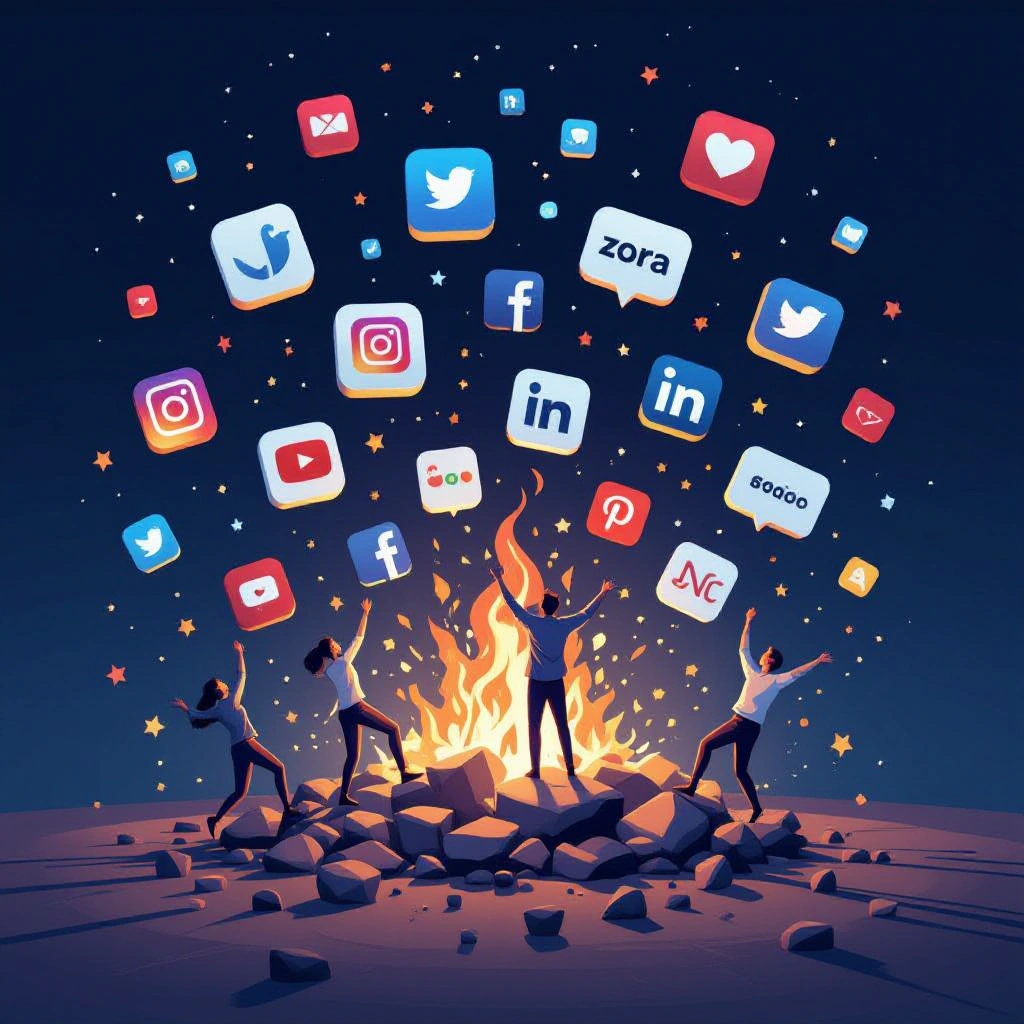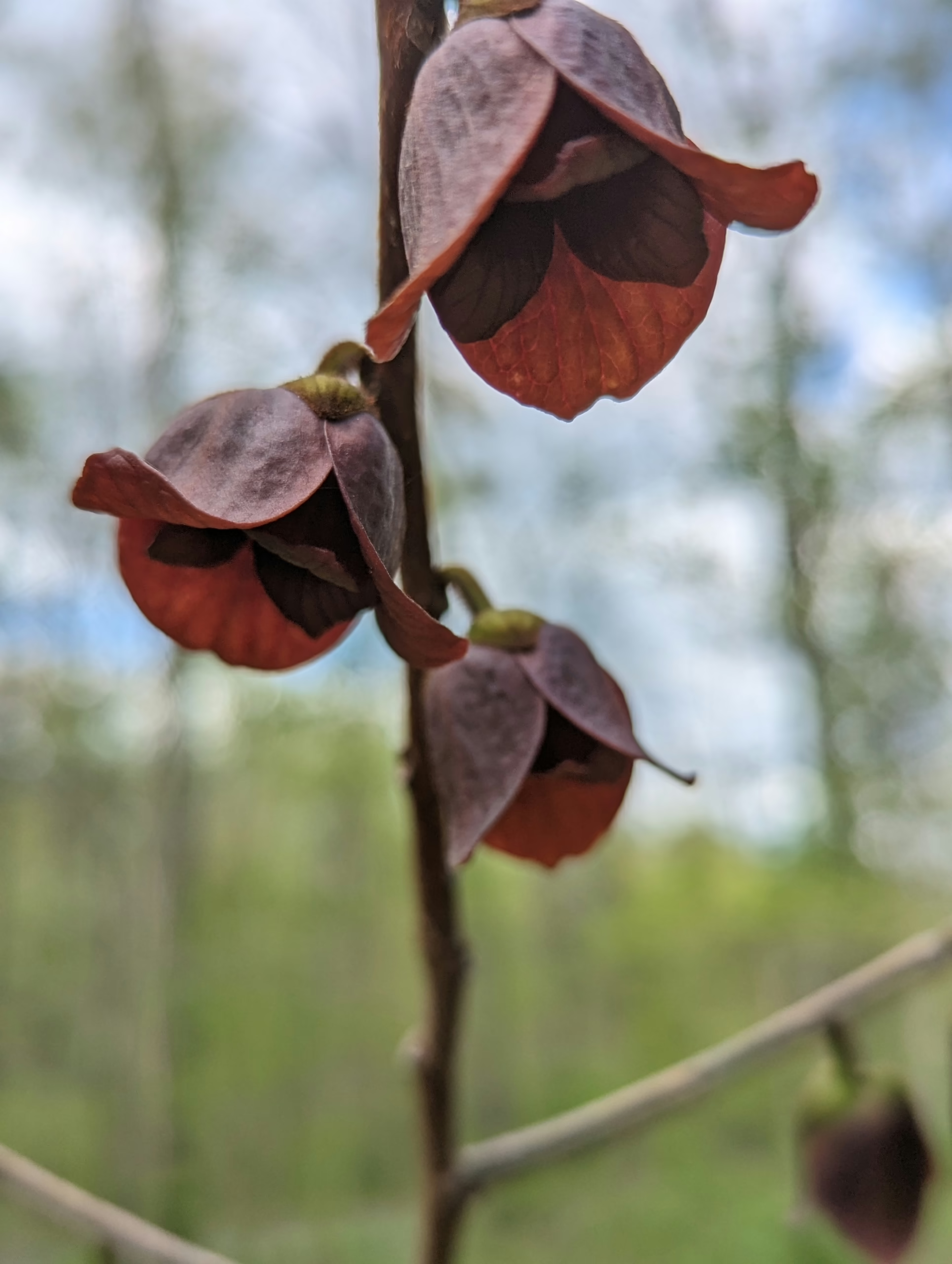For quite some time, I’ve felt that “Social Media” is both a blessing and a curse. It created a way for small time creators to have their voices heard. At the same time, many of the problems of society today can be traced back to how we use Social Media. What we need is a ‘new’ social media. One that skews us toward more positive interaction. Thankfully, a new paradigm is emerging that promises to transform the way we interact with, create, and monetize content.
Why Do We Need New Social Media?
Traditional social media platforms are centralized, meaning they are controlled by a single entity (e.g., Facebook, X, Instagram). This centralized control has skewed these platforms to emphasize behavior that benefits the entity controlling them. A few key issues with almost every existing social media platform include:
Creator Exploitation
On traditional social media, you are the product. The controlling entity of the platform relies on your content and your attention in order to generate revenue (often by serving ads). Only the largest creators ever see a portion of this revenue.
Data Privacy Concerns
In order to provide a mechanism for serving you more ads that you will ultimately click, traditional social media stores an enormous amount of data about you and your preferences. This makes them a compelling target for hackers attempting to obtain this information. This will only become worse as more and more social media companies move toward creating an ‘everything’ app that has integrated banking/payment information.
Content Censorship
Most traditional social media relies heavily on ad revenue. This (and their centralized nature) makes them highly prone to pressures from their advertisers (and governments) to control the content that you are able to see.
Transparency/Accountability
Traditional social media makes it difficult to know if you are interacting with the person you think you are. In many cases, content and interactions are completely bot/AI generated. In cases where a known person does something via social media, the ability to delete interactions and scrub timelines makes it very easy to deny what was originally done. Social Media that is unverifiable and unaccountable just brings out the worst in people.
Lack of Competition
Existing social media is highly dependent upon network effects. Creating a walled garden that prevents you from leveraging these effects elsewhere makes it very difficult for someone to move to an upstart competitor that might be doing things differently.
What are the features of New Social Media?
Many new social media platforms are redefining the digital landscape by leveraging the unique capabilities that have arisen out of blockchain technology. These platforms offer a range of features that set them apart from traditional social media. They can provide users with greater control, transparency, and new opportunities for engagement and monetization.
Let’s explore some of the key features that qualify a social media platform as a ‘new’ social media platform:
Decentralized Architecture
New social media leverages the power of blockchain technology to create decentralized platforms operating on a network of nodes. This enhances resilience against downtime and censorship, providing users with a more reliable and free platform for expression.
User-Owned Data and Content
On new social media platforms, users have full ownership and control over their data and content. This is often stored on the blockchain or a decentralized storage solution like IPFS (InterPlanetary File System). This ownership model empowers users to decide how their data is used, shared, or monetized. It eliminates the need for users to trust centralized entities with their personal information, enhancing privacy and security.
Transparent and Immutable Ledger
All transactions, interactions, and content in new social media are recorded on a public, immutable ledger. This is accessible to all participants in the network. This transparency ensures that user activities are verifiable and cannot be altered or deleted without consensus. It promotes accountability and trust within the community, as users can independently verify the integrity of the platform.
Native Tokens and/or Creator Coins
Many blockchain social media platforms introduce native tokens or creator coins. I’ll describe more on Creator Coins specifically below. Both of these can be used for various purposes such as content monetization, governance, and community engagement. These tokens provide a new way for creators to earn directly from their audience, bypassing traditional ad revenue based models. They may also offer users a stake in the platform’s ecosystem, encouraging active participation and investment.
Decentralized Governance
These platforms often implement decentralized governance models. This allows users to have a say in the platform’s development, decision-making processes, and future direction. This democratic approach gives power back to the users, ensuring that the platform evolves in a way that benefits its community. It fosters a sense of ownership and responsibility among users, leading to a more engaged and committed user base.
Interoperability and Portability
One of the earliest features of new social media platforms was their interoperability support. Most allow users to transfer their social media accounts, content, and connections between different platforms. This portability ensures that users are not locked into a single platform and can easily switch or use multiple platforms without losing their digital identity or social graph. It promotes competition and innovation among platforms, ultimately benefiting users.
Incentivized Engagement
New Social Media platforms often incentivize user engagement through rewards, for activities like content creation, curation, and community participation. These incentives encourage active and meaningful engagement, fostering a vibrant and dynamic community. They also provide creators with additional revenue streams, making content creation more sustainable and rewarding. Many of these platforms take this idea further by integrating a wallet. This makes it easy to allow users to directly award content creators via tips tied to ‘likes’ and/or other interactions.
Privacy and Security
Blockchain based social media platforms prioritize user privacy and security. This is done through features like end-to-end encryption, zero-knowledge proofs, and decentralized identity solutions. These security measures protect user data from unauthorized access and breaches. This ensures that users can interact and share content with confidence. They also comply with emerging data protection regulations, offering users greater control over their personal information.
Censorship Resistance
The decentralized nature of blockchain social media makes it resistant to censorship, as content is distributed across multiple nodes and cannot be easily removed or altered. This resistance to censorship ensures that users can express themselves freely without fear of content being taken down or accounts being suspended. It promotes a more open and diverse exchange of ideas, fostering a global community of free expression.
Smart Contracts and Automated Processes
Blockchain social media platforms utilize smart contracts to automate various processes, such as content moderation, reward distribution, and governance voting. Smart contracts enhance efficiency and transparency by executing predefined rules without the need for intermediaries. They ensure that platform operations are fair, consistent, and tamper-proof, building trust among users.
Creator Coins: A Major New Social Media Unlock
One of the most exciting developments in blockchain-based social media is the introduction of creator coins. These digital assets, often issued by creators on the platform, allow fans and followers to support their favorite creators directly. Here’s what makes creator coins unique:
- Direct Support: Fans can purchase creator coins to support their favorite creators directly, bypassing traditional advertising models. This eliminates the need for middlemen and ensures that creators receive a larger share of the revenue.
- Exclusive Access: Creator coins can unlock exclusive content, experiences, and perks for holders, fostering a deeper connection between creators and their audience.
- Community Engagement: These coins can be used to vote on content decisions, influence creator projects, and participate in community governance, enhancing user engagement and loyalty.
- Financial Incentives: Creators can earn from the appreciation of their coins, creating a new revenue stream that is independent of platform algorithms and ad revenue. Buyers of Creator coins can speculate on their future value and use this as a way of becoming an early backer of creators they believe in.
Getting Started With New Social Media
So how does one get started with ‘new’ social media? There are many platforms out there vying for users. In the following section, I’m going to describe the approach that I’ve taken after experimenting with many of them.
Farcaster: The Backbone of New Social Media
I’ve made Farcaster the “top of funnel” of my social media exposure. Farcaster stands out as the critical component that ties together all of the other decentralized platforms, offering a unified and seamless user experience.
What is Farcaster?
Farcaster itself is a decentralized social networking protocol that provides a foundation for building interconnected, user-owned social media applications. It operates on the Ethereum blockchain and utilizes a unique approach to social graph management, allowing users to own and control their social connections and content.
How Does Farcaster Hold Blockchain Social Media Together
Farcaster serves as the bridge between different blockchain-based platforms that specialize in features that we consider crucial aspects of traditional social media. It offers several key features that enhance interoperability and user experience:
Decentralized Identity and Social Graph
- User-Owned Identities: Farcaster enables users to have a single, decentralized identity that can be used across multiple platforms. This means users can maintain a consistent online presence and easily switch between different applications without maintaining a specific identity on each platform.
- Interoperable Social Connections: By allowing users to own their social graph, Farcaster ensures that friendships, followers, and other social connections are portable. This interoperability is crucial for creating a cohesive ecosystem where users can engage with their network regardless of the platform they are using.
- Integrated/Delegated Wallet: Farcaster allows you to create/associate a wallet with your identity. This is where anything you earn will be deposited and you can use your identity to cryptographically sign anything on the network that you would like to fund/purchase.
Seamless Cross-Platform Integration
- Unified Inbox and Notifications: Farcaster provides a unified inbox and notification system that aggregates messages and updates from various decentralized platforms. This feature ensures that users do not miss important interactions, even when engaging with content across different applications.
- Content Discovery and Aggregation: By integrating with multiple platforms, Farcaster allows users to discover and aggregate content from various sources in one place. This enhances content visibility and user engagement, fostering a more vibrant and interconnected social media ecosystem.
- Mini Apps: Farcaster allows you to turn any ‘tweet’ (called ‘casts’ in Farcaster) into an interactive app. This is all based on the Open Graph Protocol. Combine this with the identity and payment mechanisms that already exist in the protocol and you have a new compelling app distribution environment outside of traditional walled gardens. I haven’t been this excited about building things since the early days of mobile!
Enhanced Privacy and Security
- End-to-End Encryption: Farcaster supports end-to-end encryption for messages and interactions, ensuring that user data remains private and secure. This feature is particularly important in a decentralized environment where users control their own data.
- Censorship Resistance: By operating on a decentralized network, Farcaster helps create a censorship-resistant social media experience. Users can express themselves freely without fear of content being removed or accounts being suspended.
Innovative Monetization Models
- Creator Coins and NFTs: Farcaster supports the integration of creator coins and non-fungible tokens (NFTs), allowing users to monetize their content and social influence directly. This feature is compatible with various blockchain social media platforms, providing creators with new opportunities to earn from their audience.
My Current Setup
Once you have Farcaster setup (I often have invites, so drop me a line if you’re interested) you have the basis for your identity. From here, you can build out your social graph and also have the foundation for doing everything you’ll need to with your wallet.
The Farcaster protocol is robust enough to build the most complex social media platforms upon. Despite this, right now, the apps are basically a (fantastic) replacement for short form text social like X, BlueSky, etc. Sure, you can share long form content and images, but it’s not the same experience as platforms that are dedicated to that.
For Sharing Photos
For a more Instagram like feel. I’ve started using Zora. For the best integrated experience, create your Zora account using your Farcaster identity. You’ll automatically see anyone that you follow who has done the same.
Zora is important for another reason. This is the platform that I use to mint my creator coin. You can definitely do this in other ways, but I chose Zora because it seamlessly sets up liquidity pools for your coin. It also mints new coins for each piece of content that you publish and aligns it with your creator coin. Zora provides the mechanism for your followers to buy/trade your coin and manages the distribution of it between your wallet and the broader market.
After you mint your creator coin, you’ll want to go back into Farcaster and update your profile coin to be your creator coin. This essentially advertises to your followers that you have a creator coin and that it is the best way to support you.
For Long Form Text
If you’re reading this on my traditional blog, you know that my bread and butter is long form text content. Over the years, supporting yourself using ad supported long form text has become impossible. Even so, I don’t plan on abandoning my blog any time soon. What I have done though is started to syndicate my blog using Paragraph.
Again, sign up for Paragraph using your Farcaster identity. From here you can start creating posts directly or hook up your RSS feed in the settings to syndicate your existing content. You’ll want to ‘coin’ each post and pair each one with your creator coin (from Zora or elsewhere). If you are syndicating content from your existing blog, make sure to also setup the canonical URL to point to your blog for SEO purposes.
Let the Paradigm Shift!
New social media represents a significant shift in how we interact and engage online. By empowering users, ensuring transparency, and introducing innovative monetization models, these platforms are paving the way for a more equitable and user-centric digital future. As we continue to explore and adopt these new technologies, the potential for creators and users alike is immense, unlocking new levels of creativity, engagement, and financial opportunity. Creator coins, in particular, offer a revolutionary way for creators to connect with their audience, monetize their content, and build thriving communities, reshaping the social media landscape for the better. Have you adopted the new social media? Tell me about it and/or find me on Farcaster, Paragraph and Zora!




